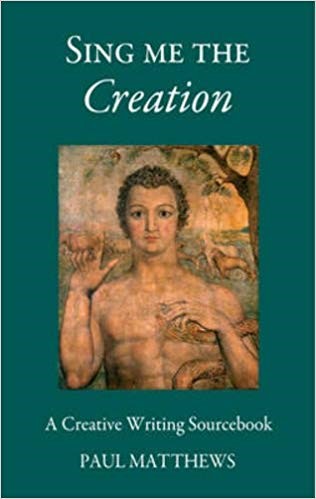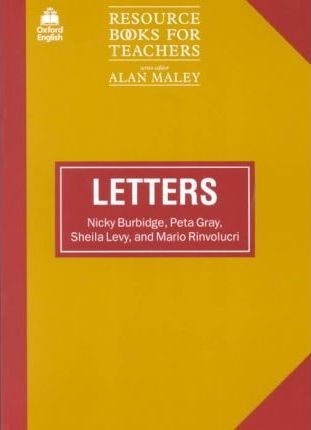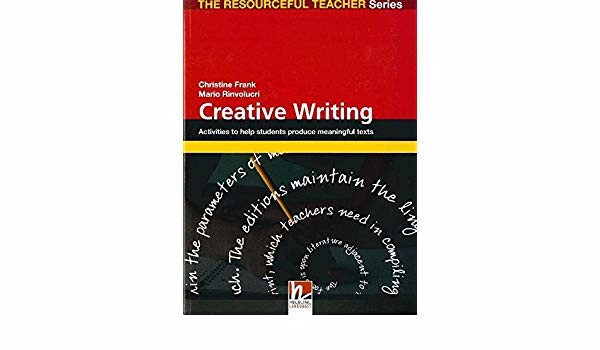Creative Writing Exercises
The techniques have been selected by Mario Rinvolucri, a Pilgrims associate, well known as author of Grammar Games, CUP, sparsely known for a book on Story-telling Once Upon A A Time, CUP, co-authored with John Morgan, and 98% unknown for Culture in Our Classroom , written with Gill Johnson, first published by Delta, and now efficiently resuscitated by Klett Verlag, Germany. Mario could be accused of spending too much time dreaming about practical, classroom techniques.
Introduction and background
My favourite book of ideas in this area is SING ME THE CREATION by Waldorf School author, Paul Matthews. His book was brought out back in 1994, 25 long years ago.

https://www.amazon.co.uk/Sing-Creation-Steiner-Waldorf-Education/dp/1869890604
In 1996 Oxford University Press published a book with this absurd title: LETTERS. Can you imagine a worse title for a book on interpersonal messaging at a time when we were all going over to emailing? I blame the authors, Burbidge, Gray, Levy and Rinvolucri, the Series Editor, Alan Maley, and the OUP marketing people who must have been dreaming deep green ideas furiously.

https://www.bookdepository.com/Letters-Nicky-Burbidge/9780194421492
Eleven years ago Helbling brought out CREATIVE WRITING that Christine Frank wrote with my collaboration.

https://www.amazon.com/Creative-Writing-Mario-Rinvolucri/dp/3902504994
If you find the exercises that follow interesting you might want to get hold of one of the above books.
Statements (Paul Matthews)
Place an object where all the students can see it.
Ask them to look at it hard for 30 seconds. Ask the students to work on their own and write 20 statements each about the object, true ones, false ones, wise ones, foolish ones, negative ones, past tense ones, and ones in their mother tongue. (You need to ask for a lot of sentences so the students force themselves to go beyond the trite and obvious.)
After the writing phase group the student in sixes to share what they have written.
Lies (Paul Matthews)
Ask each student to write 12 true things about him/herself and also 3 lies. Tell the students to hide these porkies here and there in the text.
Group the students in sixes. One person reads out their 15 sentences and the others have to try and spot the lies. Give each student in each group of six a chance to protagonise.
Writing as if you were much younger (Paul Matthews)
Give the students this 8 year old girl’s description of a Granny to read:
“A grandmother is a lady who has no children of her own, so she likes other people’s boys and girls. Grandmas don’t have anything to do except to be there. If they take us for walks they slow down past pretty leaves and caterpillars. They never say hurry up. Usually they are fat but not too fat to tie our shoes. They wear glasses and sometimes they can take their teeth out. They can answer questions like why dogs hate cats and why God isn’t married. When they read to us they don’t skip words or mind if it is the same story over again. Everyone should try to have a grandma, especially if you don’t have television because grandmas are the only grownups who always have time.
Invite feedback from the students.
Ask the students to think their way into being eight years old and to write a short piece about aunts or uncles. Go round helping students who seem to want help. Leave the others in peace.
As they finish writing ask students to post their paragraphs around the walls of the classroom. People go round and read what has been written.
These short examples of Paul Matthew’s work I hope give you a taste his richness of mind and make you want to read more of the 307 exercises in SING ME THE CREATION.
Emails and postcards from home (from LETTERS. OUP)
(This is for use by teachers working with international classes in English speaking countries.)
Ask your students to pick short, private texts from friends and family members back home, but texts they feel comfortable sharing with classmates.
Ask them, as homework, to translate two or three of these short texts. Take in the homework and carefully correct the texts.
In the next class give these back and ask them to read out their texts round the class.
This may naturally lead to a general discussion in which various types of homesickness could come up.
(When I first did this exercise I omitted the correction of homework phase. It fast became clear to me that a Japanese participant, for example, will really welcome correction so she is not presenting an email from her uncle in wonky English. It is useful to offer students some exercises in which the situation makes them genuinely feel the wish to be corrected)
I know of few cultural exercises warmer and more respect-building than this one.
The whole writes to the part (from C. Frank’s CREATIVE WRITING. Helbling)
Pair the students randomly and ask them to decide which of the two will be the EU and who will be Britain. They then go back to their normal seats and write a letter in role to the other. When they have finished they go over to their “whole” or to their “part” and exchange letters before going back to their places and penning or typing an answer. Draw the exercise to a close as people hand over their replies.
Let me offer some examples to make the idea of WHOLE and PART clearer.
THE CAR writes to its gearbox or brakes or headlights
THE DRUNKARD “ his/her liver
The RIVER “ its source/ waterfall/ gorge/meander/bed/banks/ delta
The HOUSE “ its front door/its roof/ its foundations/ its pipe work/ its cellar
The DICTIONARY “ its collocations
The CABINET “ A Ministry
CHINA “ Hong Kong/Taiwan/Tibet
ETNA “ the Town of Catania
(The volcano thinks of Catania as part of itself because of its huge lava flow which has often submerged the town in liquid black rock)
TREE “ leaves/roots/bark/sap/branches/crown
I could bore you with lyrical accounts of how strikingly different TREE- Leaf correspondences are in temperate climates depending on the season: in Spring optimism and light, in the autumn sadness, regret, melancholy.
Yeah, us teachers love verbally overflowing when we remember our successful times in class. But your thrills in class are yours and me gabbling on further about mine would be very hot-airish.
Enjoy the thrill of getting your students to take Gestalt psychology on board and roleplay WHOLES and their Parts.
Ps: do you think that WHOLE and part letter writing could be useful in CLIL classes?
Please check the Creative Methodology for the Classroom course at Pilgrims website.
Creative Writing Exercises
Mario Rinvolucri, UK